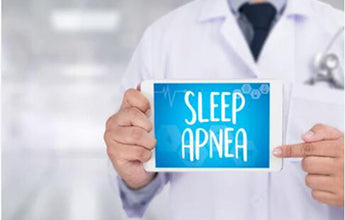People with sleep apnea stop breathing intermittently during sleep (complete cessation of airflow through the mouth and nose). Apnea refers to the cessation of breathing for more than 20 seconds, or the cessation of breathing for less than 20 seconds, but accompanied by symptoms such as bradycardia, cyanosis of the lips, and purple body. This may be due to many physiologic or pathophysiologic processes.
Apnea is harmful and can lead to complications. Apnea directly leads to decreased sleep quality and disordered sleep structure, which in turn leads to daytime drowsiness, drowsiness, lack of energy, memory loss, inattention, and even emotional stress, anxiety, and depression. It may also cause metabolic dysfunction. Repeated hypoxia can damage the cardiovascular and cerebrovascular and affect the nervous system etc.
Apnea may be obstructive, central, or mixed (complex sleep apnea syndrome).
The mechanism (or cause) of sleep apnea is somewhat different among each type. Understanding the different types of sleep apnea can help a person determine the cause of their symptoms and seek the correct medical care.
3 Types Of Sleep Apnea
- OSA: Obstructive sleep apnea
- CSA: Central sleep apnea
- CompSAS: Complex sleep apnea syndrome
OSA
Obstructive sleep apnea (OSA) is a disorder that is characterized by obstructive apneas, hypopneas, or respiratory effort-related arousals caused by repetitive collapse of the upper airway during sleep. It is also the most common type of apnea.
Risk Factors
Older age: OSA is most common among older males but can also affect females and children.
The prevalence of OSA also varies by race. OSA is more prevalent in African Americans younger than 35 years old than in White Americans of the same age group.
Symptoms
Most patients with OSA complain of daytime sleepiness, or their bed partner reports loud snoring, gasping, choking, snorting, or interruptions in breathing while sleeping.
For more details about OSA, please refer to: Obstructive Sleep Apnea (OSA)
More related content:
What is Upper Airway Resistance Syndrome (UARS)?
CSA: central sleep apnea. It refers that patients have the symptom that breathing repeatedly stops and starts when they are sleeping. Central sleep apnea occurs because your brain doesn't send proper signals to the muscles that control your breathing. During that time, the patients' breathability is weak, as shown by the cessation of thoracoabdominal respiratory movement, or significantly reduced nasal airflow and respiratory activity. Unlike obstructive sleep apnea, the airway is not blocked.
Until now, the cause of central sleep apnea is not well known.
For more details about OSA, please refer to the following:
What Is Pediatric Obstructive Sleep Apnea?
Both central sleep apnea and obstructive apnea are common apnea symptoms.
The difference between the two is that chest movement still exists when obstructive breathing stops, which is due to the obstruction of the airway leading to apnea, which is generally accompanied by louder snoring.
The central type means that the chest and abdomen movement disappears at the same time when breathing stops, and the patient has no symptoms of upper airway obstruction and respiratory movement against airway obstruction and generally does not snore. So patients are not even aware that they have apnea.
CompSAS is when the patient has both CSA and OSA. CompSAS is also referred to as treatment-emergent central sleep apnea. Complex sleep apnea occurs when someone who previously had obstructive sleep apnea develops central sleep apnea due to treatment with continuous positive airway pressure (CPAP).


